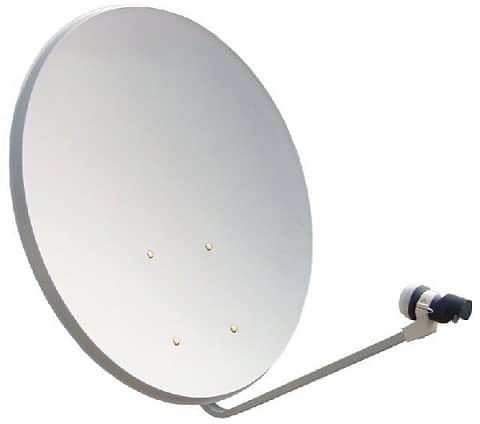OVERVIEWS OF THE METHODS
- From one dish to as much as 8 decoders( maximum of two ways lnb on a 90cm, maximum of 8 ways on a 3meter dish. Note; you need an lnb holder for 3 or more lnb pins)
- Via a splitter(splitters has limitations)
- Via looping( looping comes with virtually all decoders including company-branded decoders like dst*
- Also, you can connect two televisions via RF connections
- Via an advanced equipment that can enable simultaneous views whre you can both change the channels independently(This is not a subject of discussion for now)
THE METHODS EXPLAINED IN DETAILS
- CONNECTION TO TWO OR MORE TVs USING THE RF SIGNAL: Most standalone
decoders and some advanced company branded decoders like mytv, some
dst* decoder have a label tagged RF Out. this function is limited but
effective. also, you might not get the highest quality picture from the
other TV. To get this fixed, connect one end of the cable to the RF OUT and the other end to the TV’s |RF IN.
Note most uses different devices to connect check the images
below. From the TV set, all you need do is to search through as if you
are searching for terrestrial TV signal and you should get the
reception. This is an alternative to HDMI and RF wire connection which
is very much common to us, you can as well split the signals to two or
more Television.
Unlike other methods of sharing this reception you can only watch what the main TV is watching; you don’t have the liberty to change channels from the TV except the decoder does this. This is different from the dual view feature where you can change channels from the other televisions.


- Next is the lnb signal: From the Lnb you can share our signal from a single dish to various decoders ranging from one lb pin to eight pins. From the above-listed modes of LNB’S we have, we can see that you can simply share your lnb signals to other decoders from single to octa lnb(octa lnb means eight ways lnb). i.e from one decoder to eight decoders, and none of the signals transferred to any of the decoders will be affected which means, all the decoders can work and serve the same purpose. None of the decoders will alternate as they will work independently of one another. They will all give the same output. In this case, every decoder and users are at liberty to watch any frequency or channels anytime without affecting the signal of the other.


- You can also share your signal through LOOPING.
Most of our Decoders comes with this function, you can see this at the back of your decoder immediately next to the LNB IN or Input you should see a \Similar port with label Loop Out Or LNB out.

HOW LOOPING WORKS
Looping is almost similar to using a splitter you are restricted to one frequency; which I will explain later under Splitter.
How to LOOP?
It is a kind of master and slave connection.From the LNB you connect one end of the coax cable to the LNB and the other to the LNB input at the back of the decoder, this decoder becomes the primary decoder meaning; this is where you get the main signal source. From the Primary decoder you use a Coaxial Cable(also known as lnb cable) and connect from the LNB Out / LOOP out to the other decoder LNB IN. with this you have looped the signal. But like I earlier said just like using a splitter both decoders must carry same frequency and satellite for it to work well.Also, the second decoder will not work except the primary decoder is powered on, it serves as the signal translator. you can loop to as many decoders as possible, to add more decoders, simply carry out this simple steps; From the second decoder which you looped you should loop out from it just as you did with the primary decoder you loop out and connect to the LNB in of the 3rd decoder, to add more you loop from the 3rd to the 4th and so on. Note all the decoders must be powered on and must carry same frequency and satellite as the one in the main primary decoder. - HOW TO SET UP A SPLITTER IN OTHER TO SHARE YOUR SIGNAL

When you use a splitter you are limited to use only one frequency for both receivers or decoders; what this means is, you can not use two or more frequency when using a splitter. For example, if you are to track multi tv @ 28.2East, we have about four Frequency in this satellite which is; 12525 V 27000, 11565 v 30000, 11675V30000, and 11093 V 30000. if you use a double pin LNB for the two decoders, you will be able to watch all the channels on all frequency at any time without any itch or bridge of connection to the other decoder. But when you use a splitter you are only to use one frequency at a time for both decoders. If you use 12525 V 27000 on one decoder, the other decoder must also use same frequency 12525 V 27000 if at anytime you change the frequency of any of the decoders, the other one will suffer. If you must enjoy all channels you must make sure you are using the same frequency simultaneously for both decoders, decoder one shouldn’t be on 12525 V 27000 and the other decoder on frequency 11093 V 30000… if this happens one will suffer. But Note if one of the decoders is turned off you can watch any frequency at any time… but once the other connected decoder is powered on you must stick to the rule of one same frequency. This is the main difference between splitting and looping.


No comments:
Post a Comment